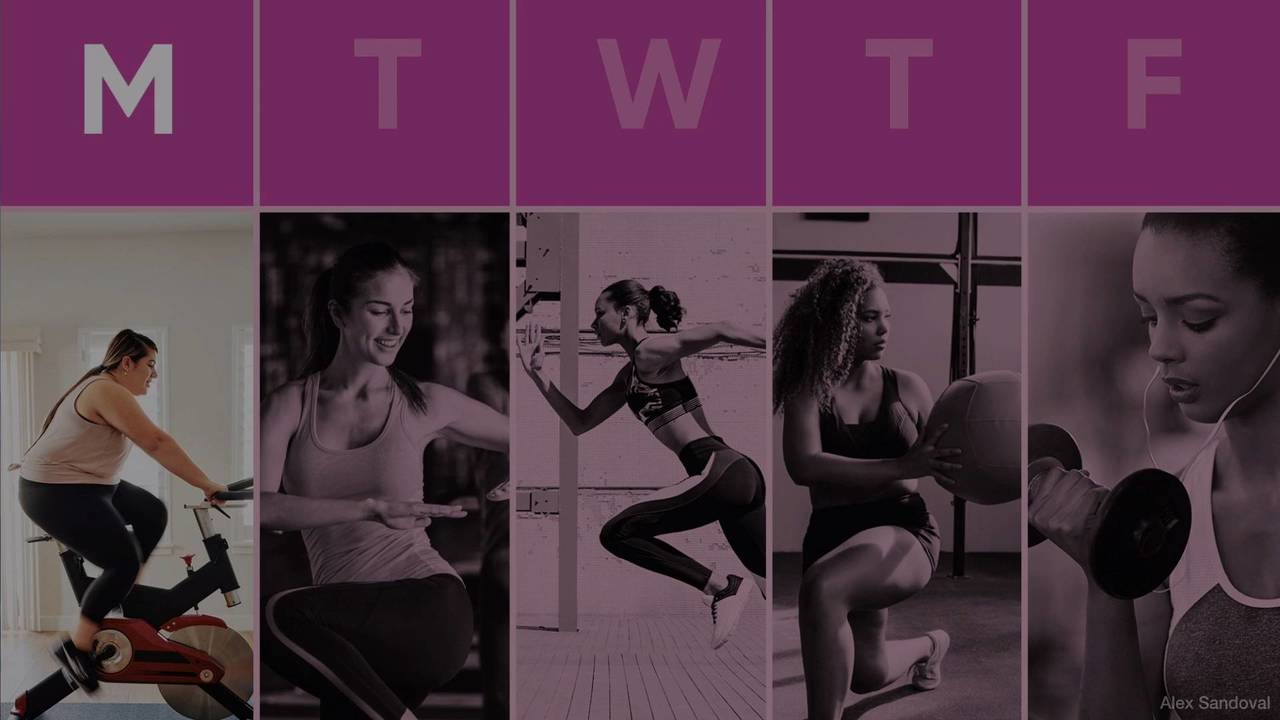You know consistency is key when it comes to seeing results from any training program. It’s true that if you want to become a better runner, you need to run; if you want to make push-ups suck less, do more push-ups — you get the idea. The same goes if you’re regularly doing squats, kettlebell swings, or planks. You’ll get better at that exercise because you’re doing it on repeat, but that doesn’t mean you should stick to one exercise or even one method of training all. the. time.
Different workouts scheduled throughout the week add variety to your routine that keeps muscles guessing and prevents your brain from getting bored. Still, the benefits of putting a blend of workout modalities on your calendar extend beyond the idea of simply mixing it up.
To convince you to change up your training techniques, look to Ashley Joi, CPT, instructor on fitness platform Centr, which offers a six-week Fusion program that combines strength training, boxing-inspired HIIT, and power yoga. Here, Joi shares her philosophy on why varied programs like this are such a good idea, and how you can utilize the same concept (and reap the same benefits) in whatever your workout routine looks like these days. (See more: Here’s What a Perfectly Balanced Weekly Workout Schedule Looks Like)
The Fitness Benefits of Doing Different Workouts
You’ll target more muscles.
Yes, doing squats every day will strengthen your quads and glutes, and performing push-ups will target your chest and core. But by doing a mix of exercises — punches, overhead presses, donkey kicks, deadlifts, sun salutations, to name a few — you work a wider range of muscle groups, says Joi. Choosing different workouts throughout the week, from strength to yoga, means you’re not only working different large muscle groups but also smaller muscles that you wouldn’t necessarily hit with just one modality.
You move in more planes of motion.
For anyone who sits at a desk most of the day (hello, WFH life!), it’s super important to move your body in different ways so it’s not stuck in that hunched over, seated position that can lead to aches, pains, poor posture, and other injuries. Mixing up your routine means more chances to move not just up and down or front to back, but also side to side and even in rotation, says Joi. For example, boxing includes a lot of rotational exercises as you jab and cross, while HIIT can include all planes of motion, including up and down (i.e. burpees) and side-to-side (i.e. skaters). (Related: How to Set Up the Most Ergonomic Home Office Ever)
You get to know your body better.
“When you include different forms of exercise, you can figure out where you’re strongest,” says Joi. For example, Joi says she didn’t do much boxing before joining the Centr team but realized she could still throw powerful punches thanks to her regular weight training. “That self-awareness is something that people can take outside of the gym,” she says. Surprising yourself through a new workout challenge is a great way to boost confidence. (More: The Mental and Physical Benefits of Trying a New Workout)
It can also help you pinpoint any muscle imbalances or where you might have some uneven weakness. And on that note, don’t be afraid to challenge yourself in those weaker areas of fitness — say, if you need to work on your barbell skills or you don’t feel so confident in your running technique. “It’s something you can become really good at eventually,” says Joi. At the very least, you’ll learn to feel a little less awkward doing whatever it is the more you practice — you just have to start.
You get stronger, powerful, and more flexible.
One reason Centr included the mix of strength training, boxing, and yoga specifically, is the three methods each bring something different to the fitness table, says Joi. You use weights to build strength, HIIT to boost cardio and endurance, and yoga to improve mobility and flexibility. “This encompasses all the great movement practices that will allow everybody to become a better version of themselves,” says Joi. Depending on your goals, you can add heavier weights (for strength) or stretching (for improved flexibility) but having a mix of all modalities means you become an all-around better athlete. (Related: The Only 4 Exercises You Need to Be a Better Athlete)
Oh, one more thing: Don’t forget to build in rest.
Scheduling something like a yoga session or a mobility routine into your weekly fitness routine means you can account for an active recovery day, and that’s crucial if you want to keep training for the long haul and avoid injury, says Joi. Even the best-laid workout plans can lead to overtraining if your body doesn’t get ample time to rest in between workouts. People underestimate the power of sleep and hydration, so don’t forget to keep those on the schedule, too, she says.
Most importantly, tune into what your body is telling you it needs. If you have a HIIT session on the calendar, but you’re feeling wiped, swap in a yoga session or a long walk. “It comes down to personalizing your program and listening to your body,” says Joi.

